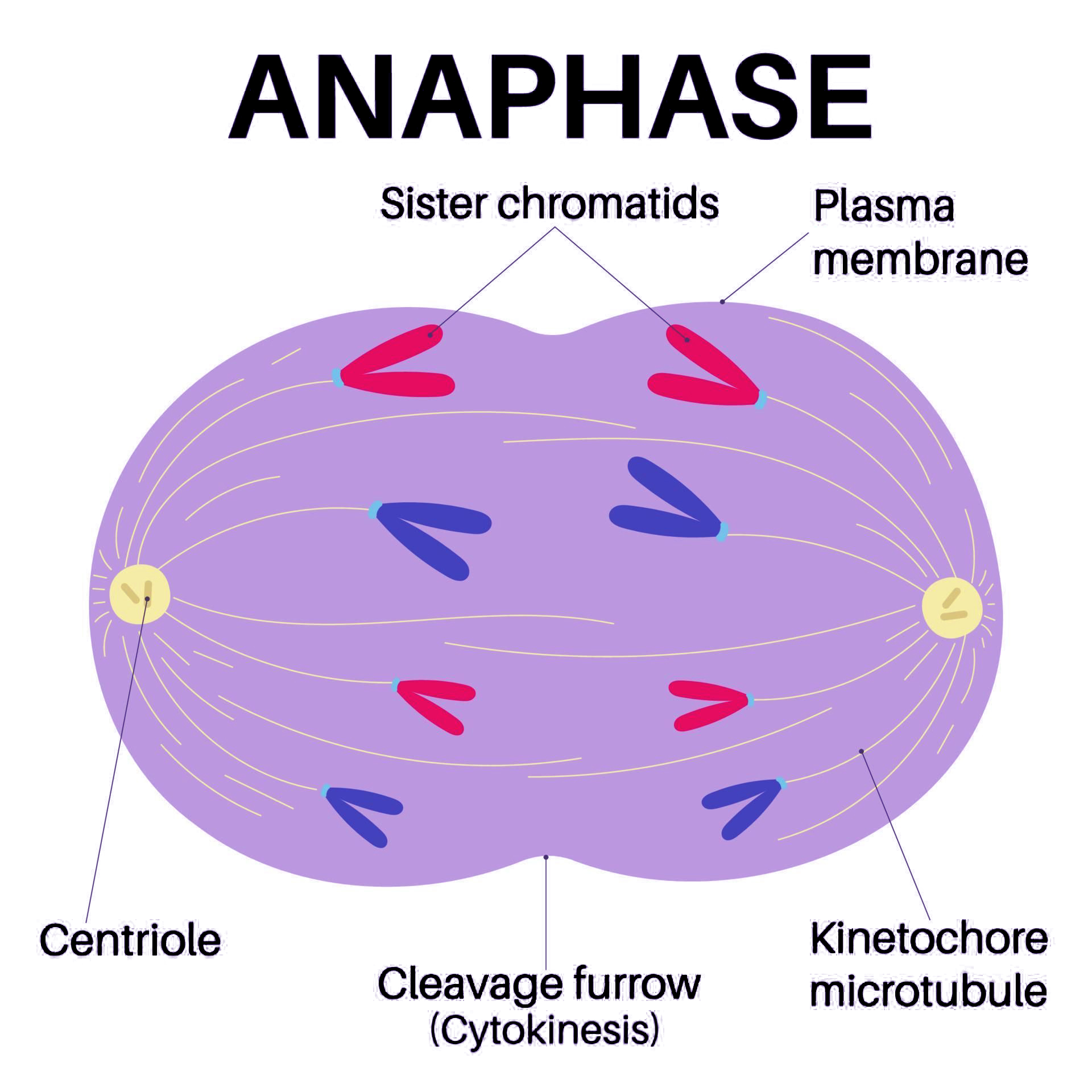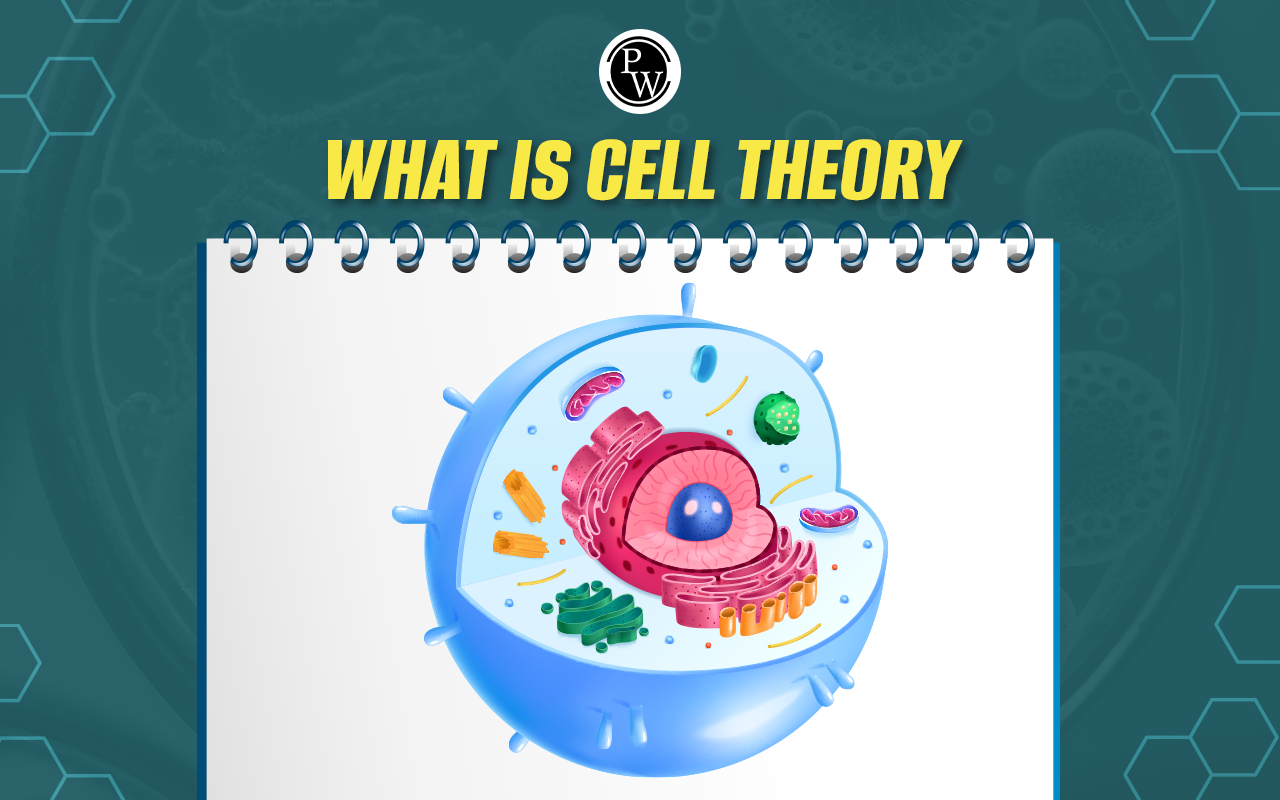
Anaphase: Anaphase is the third stage of mitosis, following prophase and metaphase. During anaphase, the chromosomes, which have already been duplicated, are pulled apart into two sets of daughter chromosomes. These daughter chromosomes move to opposite ends of the cell. At this point, the chromosomes are highly condensed, which facilitates their separation and the eventual formation of new nuclei. Detailed NEET Biology Notes on anaphase, including diagrams and information about both mitosis and meiosis, are provided in the article below.
What is Anaphase?
Anaphase is a stage of mitosis, which is the process of cell division. The term "anaphase" comes from the Ancient Greek words "ana-" meaning "back" or "backward," and "phasis" meaning "appearance." Anaphase is a stage of mitosis that follows metaphase. During anaphase, the replicated chromosomes (daughter chromatids) are separated and moved to opposite ends of the cell. By the end of anaphase, the chromosomes are at their most condensed state, which helps in their segregation and the reformation of the nucleus. Anaphase begins when the anaphase-promoting complex targets securin for destruction, releasing separase. Separase then breaks down cohesin, the protein that holds sister chromatids together. Three types of microtubules—kinetochore, interpolar, and astral microtubules—are involved in this process. Kinetochore microtubules pull the sister chromatids toward the cell poles, giving them a V or Y shape. Interpolar and astral microtubules elongate the cell, making it more oval-shaped. After anaphase, the cell enters the final stage of mitosis, telophase.Sexual Reproduction in Flowering Plants
Anaphase Diagram
The anaphase diagram is as follows:
Anaphase Stages
Anaphase is an essential stage in the division of eukaryotic cells, where chromosomes are moved to opposite ends of the cell. Here are the main steps of Anaphase:- Start of Anaphase: Anaphase starts once the cell passes the spindle formation checkpoint, which allows the chromosomes or chromatids to separate.
- Chromosome Movement: The microtubules that attach chromosomes to the centrosomes shorten, pulling the chromosomes toward the centrosomes until they form a semi-circle around them.
- Formation of APC: The cell sends a signal that activates the Anaphase-Promoting Complex (APC), which starts the process of separating homologous chromosomes or sister chromatids.
- Role of Separase: When separase is activated, it breaks down cohesins, the proteins that hold chromatids together. This allows the chromatids to separate.
- Microtubule Function: After the cohesins are broken down, the microtubules remain attached to the kinetochores and continue to shorten, pulling the chromosomes toward the centrosomes.
- End of Anaphase: Anaphase concludes when telophase and cytokinesis begin. During telophase, the nuclear envelope reforms, and the chromosomes start to unwind.
Anaphase of Mitosis
Anaphase is the third and often shortest stage of mitosis, the process of cell division that creates two genetically identical daughter cells. During anaphase, the sister chromatids, which are copies of chromosomes connected at the centromere, are pulled apart toward opposite poles of the dividing cell by the mitotic spindle fibers.- Separation of sister chromatids: At the start of anaphase, the sister chromatids are joined at the centromere by a protein complex called cohesin. A signal triggers the cohesin cleavage, allowing the sister chromatids to separate and become individual chromosomes.
- Action of mitotic spindle: The mitotic spindle fibers, attached to the kinetochore of each sister chromatid, begin to shorten quickly due to the depolymerization of microtubules, the protein components of the spindle fibers. This shortening pulls the separated sister chromatids toward opposite poles of the cell.
- Chromosome movement: As the microtubules shorten, the chromosomes rapidly move toward the opposite poles of the cell. This movement is essential to ensure that each daughter cell receives a complete set of chromosomes.
Anaphase of Meiosis
Anaphase is an important stage in both mitosis and meiosis, where chromosomes are separated. In meiosis, a type of cell division that halves the chromosome number and produces four sex cells (gametes), anaphase occurs in two distinct phases: Anaphase I and Anaphase II.Anaphase I
Anaphase I is the third phase of meiosis's first round of cell division, coming after prophase I and metaphase I. Chromosomes move to opposite ends of the cell via a network of microtubules known as the spindle apparatus. This separates pairs of similar chromosomes, known as homologous chromosomes, into two distinct groups. Kinetochores, proteins that connect microtubules to the center of each chromosome, play an important role in this process. When microtubules break down, they shorten and pull each chromosome closer to its destination. Kinetochores act as secure clips that hold chromosomes together until they are properly separated.| Important NEET Biology Notes | ||
|---|---|---|
| Selaginella | Embryo | Malvaceae |
| Pinus | Polyembryony | Volvox |
Anaphase II
Anaphase II is essential for meiosis II, the second round of cell division after meiosis I, which occurs in the haploid daughter cells produced during anaphase I. The primary goal of anaphase II is to distribute genetic material in order to produce gametes evenly. During this phase, each chromosome's centromeres split simultaneously, causing sister chromatids to separate and move to opposite ends of the cell. Kinetochores take the lead, with chromosome arms following behind. The primary function of both stages of anaphase is to ensure that each daughter cell receives an identical set of chromosomes before entering the cell's final phase, telophase.| Important NEET Biology Notes | ||
|---|---|---|
| Chara | Funaria | Apomixis |
| Rhizopus | Spirogyra | Bacteriophage |
Characteristics of Anaphase
Anaphase is a stage in eukaryotic cell division during which chromosomes separate and move to opposite ends of the cell. Here are the main features of Anaphase:- Chromosome Separation: Anaphase starts after the spindle formation checkpoint, allowing chromosomes or chromatids to separate. Microtubules connected to centrosomes shorten, pulling chromosomes towards them until they form a semi-circle.
- Cohesin Breakdown: Cohesins, which hold chromatids together, are broken down by separase, causing chromatids to separate. During meiosis I, cohesins binding homologous chromosomes break down in anaphase I.
- Chromosome Movement: Kinetochore microtubules shorten towards centrosomes, pulling chromosomes apart. Non-kinetochore microtubules lengthen in the opposite direction, expanding the cell and further separating chromatids.
- Chromosome State Change: Sister chromatids become independent chromosomes after separation.
- Anaphase in Mitosis: During mitosis, DNA divides equally into two daughter cells. Before anaphase, chromosomes condense, spindle fibers made of microtubules form, and chromosomes align on the metaphase plate. Separase initiates the separation of sister chromatids at the start of anaphase.
- Anaphase in Meiosis: In meiosis I, cohesins holding homologous chromosomes dissolve during anaphase I.
- Preparing for Cell Division: A nuclear envelope forms after chromosomes are fully separated, and cytoplasm divides in the final steps of cell division.
| NEET Exam Important Links | |
|---|---|
| NEET Biology Syllabus | NEET Biology Diagrams |
| NEET Biology MCQ | NEET Biology Chapter wise Weightage |
| NEET Biology Notes | NEET Previous Year Question papers |
Anaphase FAQs
Q 1. What are the 5 stages of mitosis?
Ans. Mitosis is divided into five phases: prophase, metaphase, anaphase, telophase, and cytokinesis. During interphase, the nuclear envelope surrounds the nucleus, DNA replicates in the S phase, and sister chromatids join at the centromere.
Q 2. What 3 events occur during anaphase?
Ans. During anaphase, cohesins holding sister chromatids at the centromeres are cleaved, centrioles move to opposite poles, and a spindle made of microtubules forms.
Q 3. What are the two types of anaphase?
Ans. Anaphase consists of two processes: Anaphase A, where chromosomes move toward spindle poles as connecting fibers shorten, and Anaphase B, where the spindle elongates, separating the poles.
Q 4. Why is anaphase so short?
Ans. Anaphase is short because it only involves the separation of sister chromatids. The separase enzyme cleaves cohesins, allowing the chromatids to separate quickly.
Q 5. Does anaphase have DNA?
Ans. Yes, during anaphase, chromosomal DNA is pulled by the spindle, creating several physical challenges.
🔥 Trending Blogs
Talk to a counsellorHave doubts? Our support team will be happy to assist you!

Check out these Related Articles
Free Learning Resources
PW Books
Notes (Class 10-12)
PW Study Materials
Notes (Class 6-9)
Ncert Solutions
Govt Exams
Class 6th to 12th Online Courses
Govt Job Exams Courses
UPSC Coaching
Defence Exam Coaching
Gate Exam Coaching
Other Exams
Know about Physics Wallah
Physics Wallah is an Indian edtech platform that provides accessible & comprehensive learning experiences to students from Class 6th to postgraduate level. We also provide extensive NCERT solutions, sample paper, NEET, JEE Mains, BITSAT previous year papers & more such resources to students. Physics Wallah also caters to over 3.5 million registered students and over 78 lakh+ Youtube subscribers with 4.8 rating on its app.
We Stand Out because
We provide students with intensive courses with India’s qualified & experienced faculties & mentors. PW strives to make the learning experience comprehensive and accessible for students of all sections of society. We believe in empowering every single student who couldn't dream of a good career in engineering and medical field earlier.
Our Key Focus Areas
Physics Wallah's main focus is to make the learning experience as economical as possible for all students. With our affordable courses like Lakshya, Udaan and Arjuna and many others, we have been able to provide a platform for lakhs of aspirants. From providing Chemistry, Maths, Physics formula to giving e-books of eminent authors like RD Sharma, RS Aggarwal and Lakhmir Singh, PW focuses on every single student's need for preparation.
What Makes Us Different
Physics Wallah strives to develop a comprehensive pedagogical structure for students, where they get a state-of-the-art learning experience with study material and resources. Apart from catering students preparing for JEE Mains and NEET, PW also provides study material for each state board like Uttar Pradesh, Bihar, and others
Copyright © 2025 Physicswallah Limited All rights reserved.
Get App









